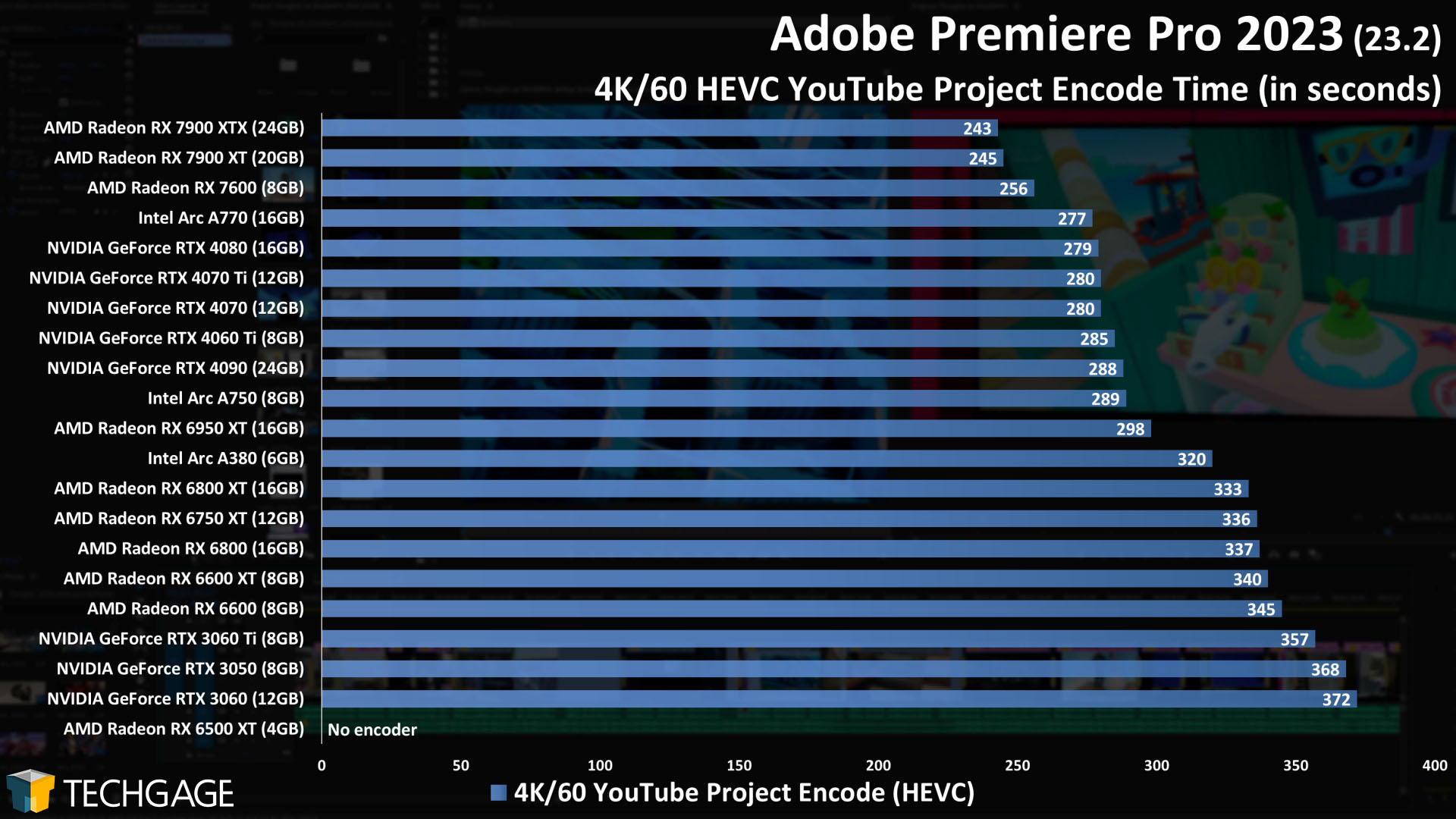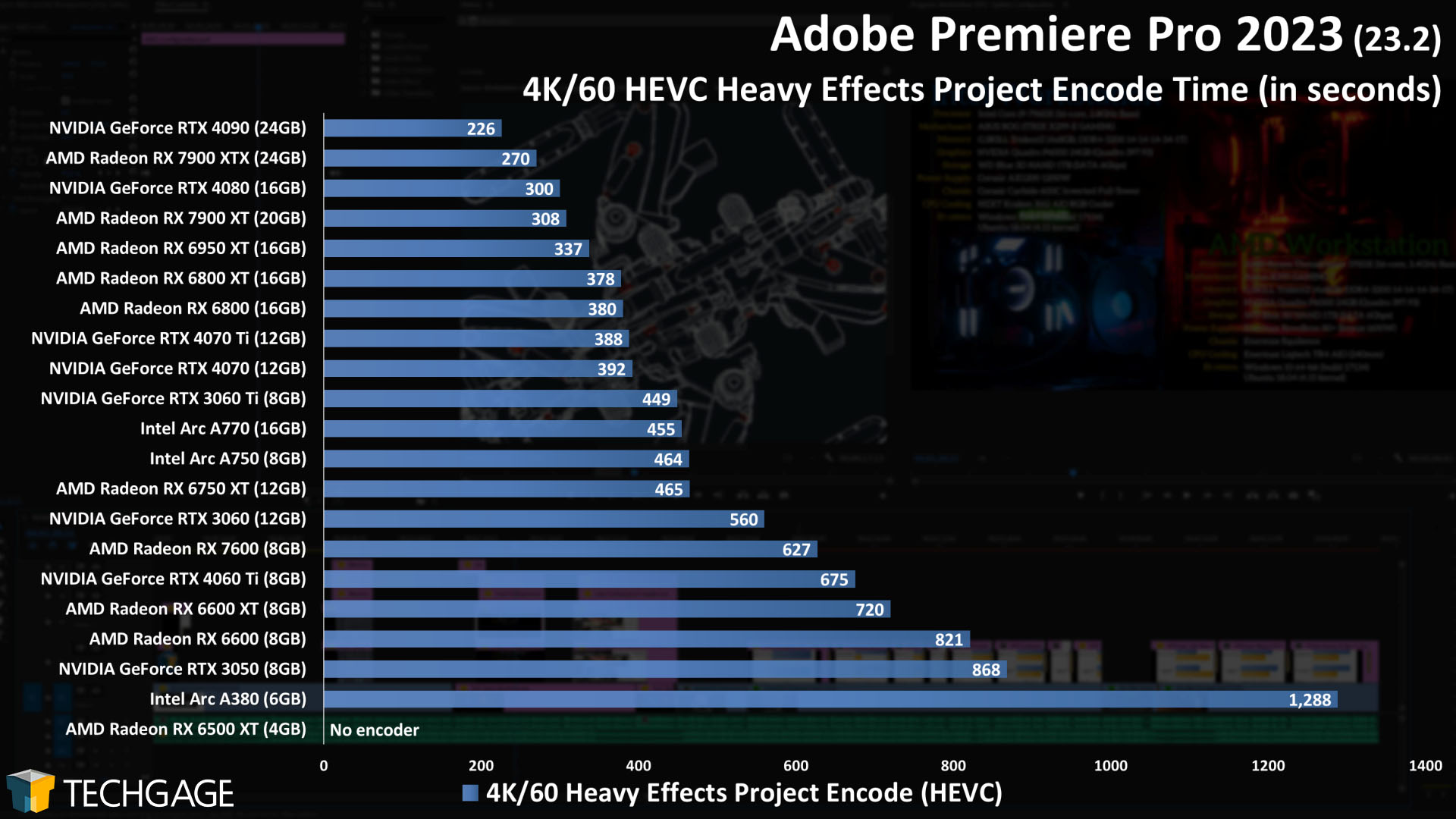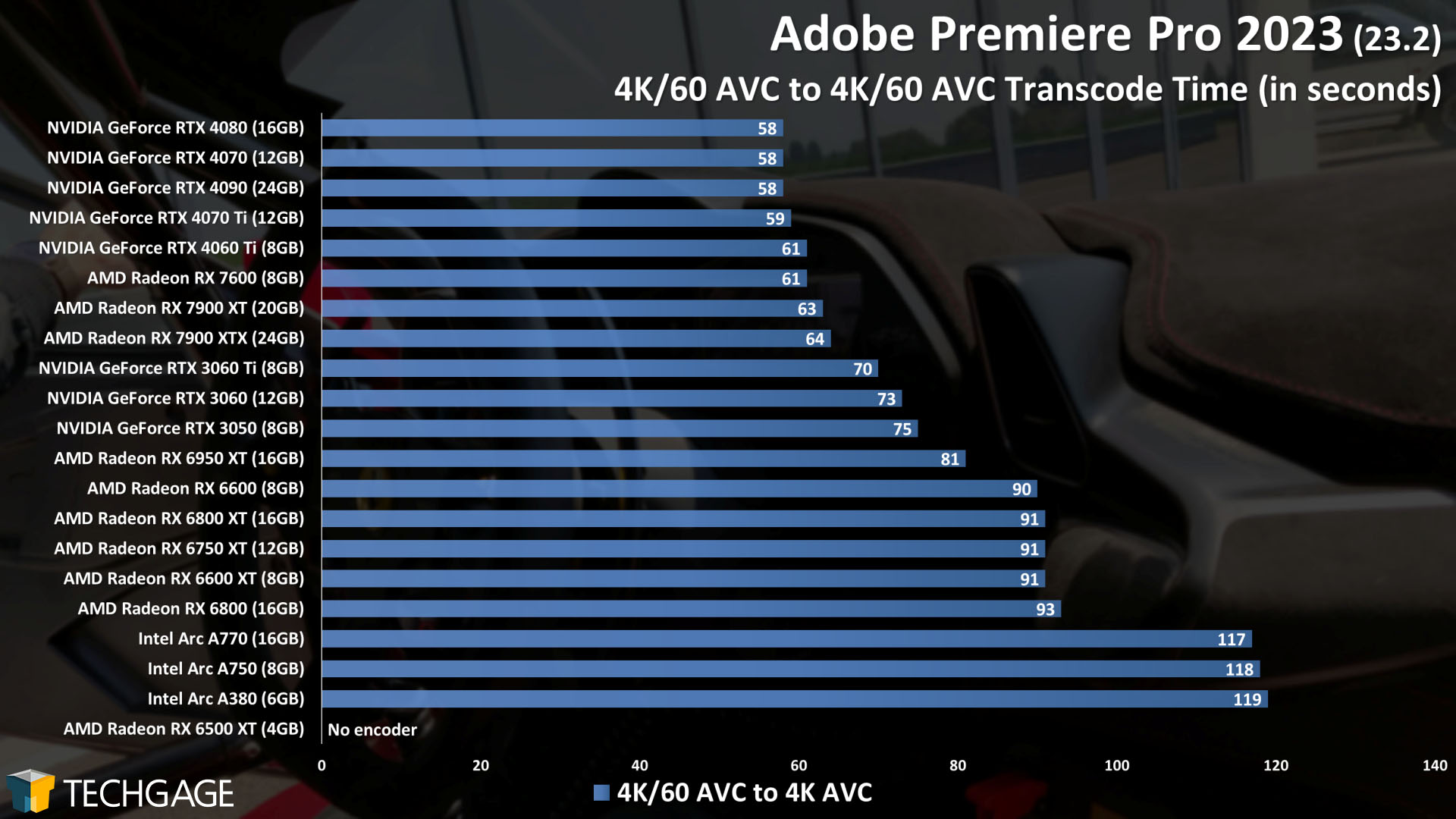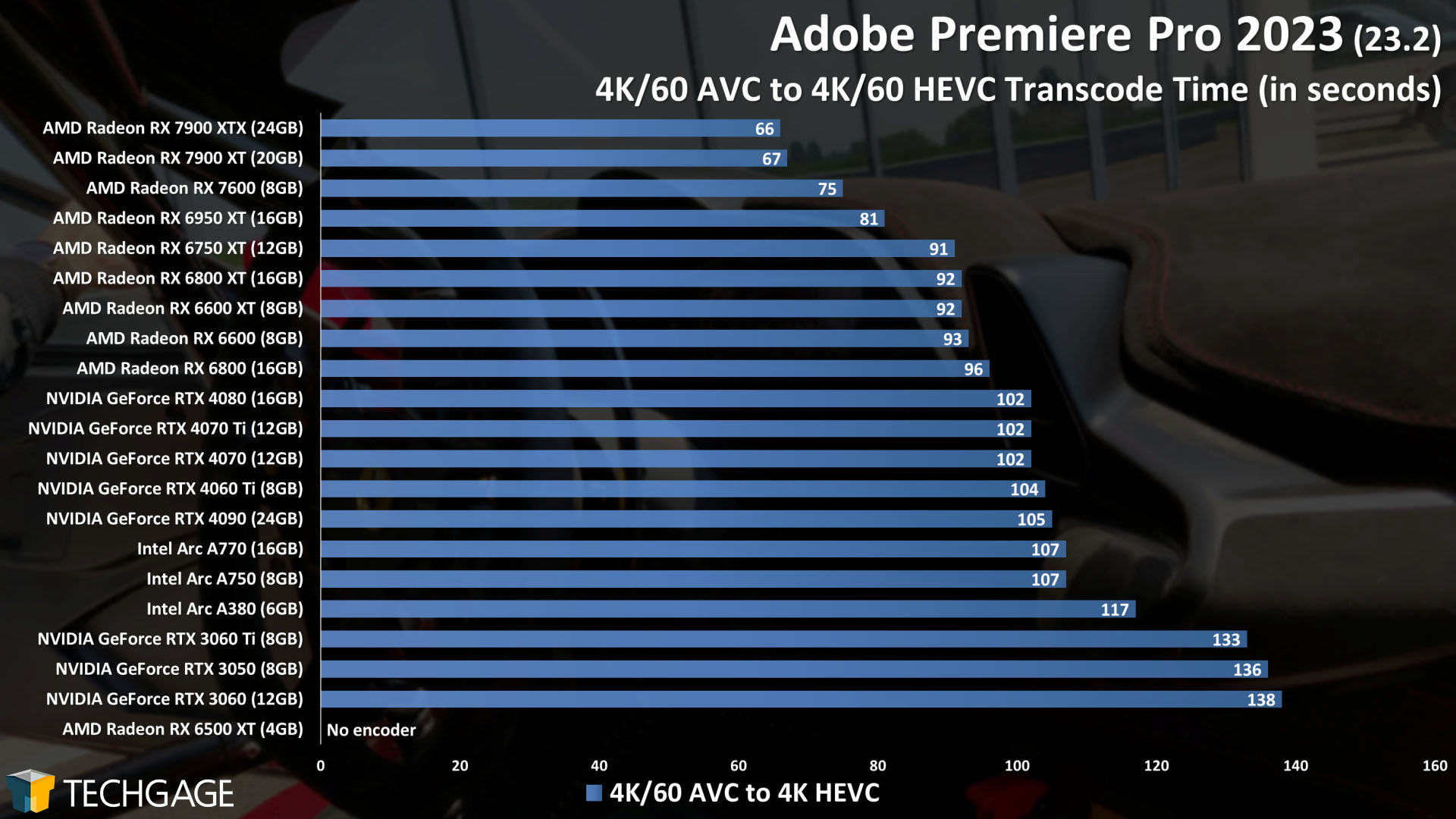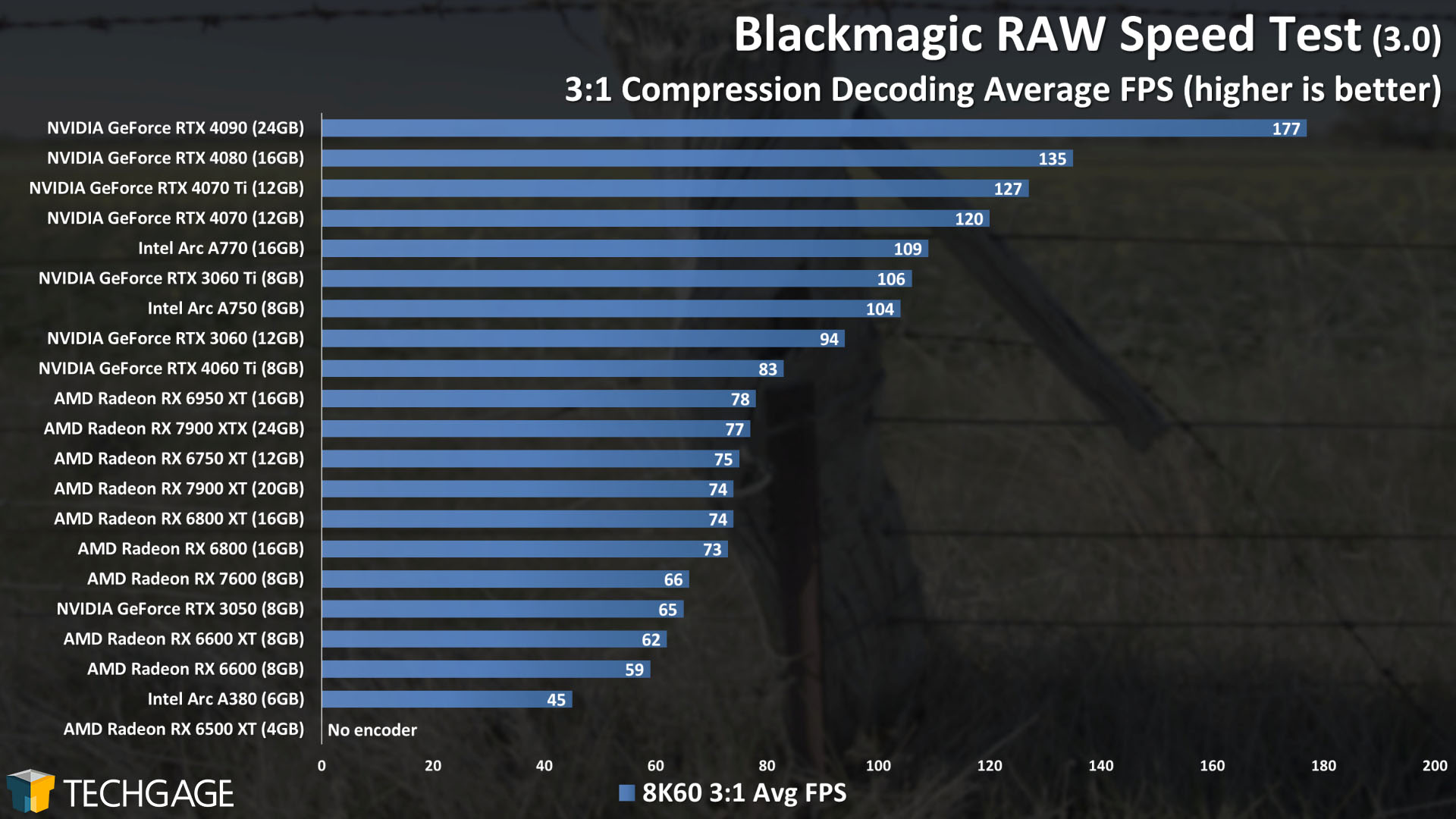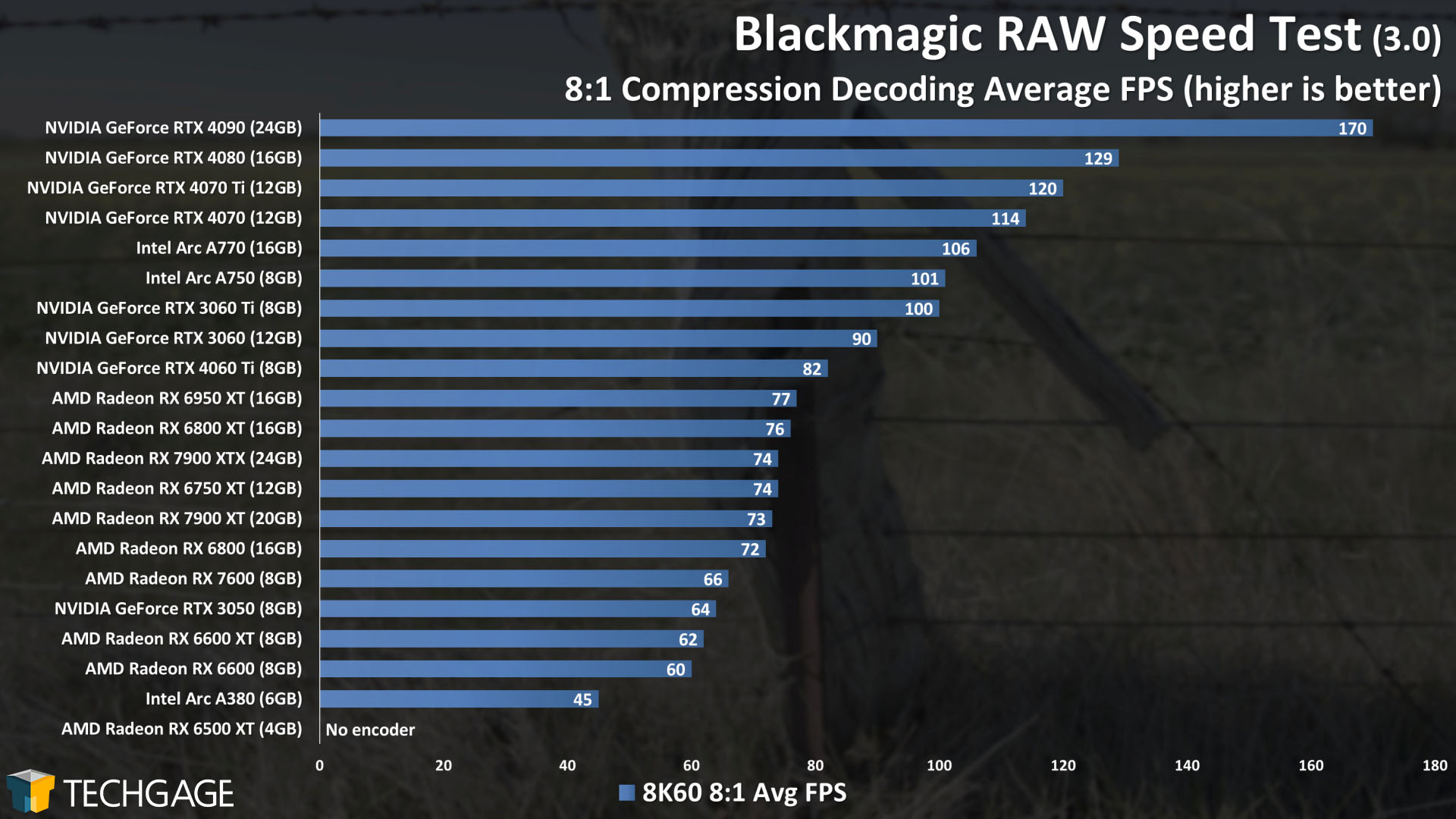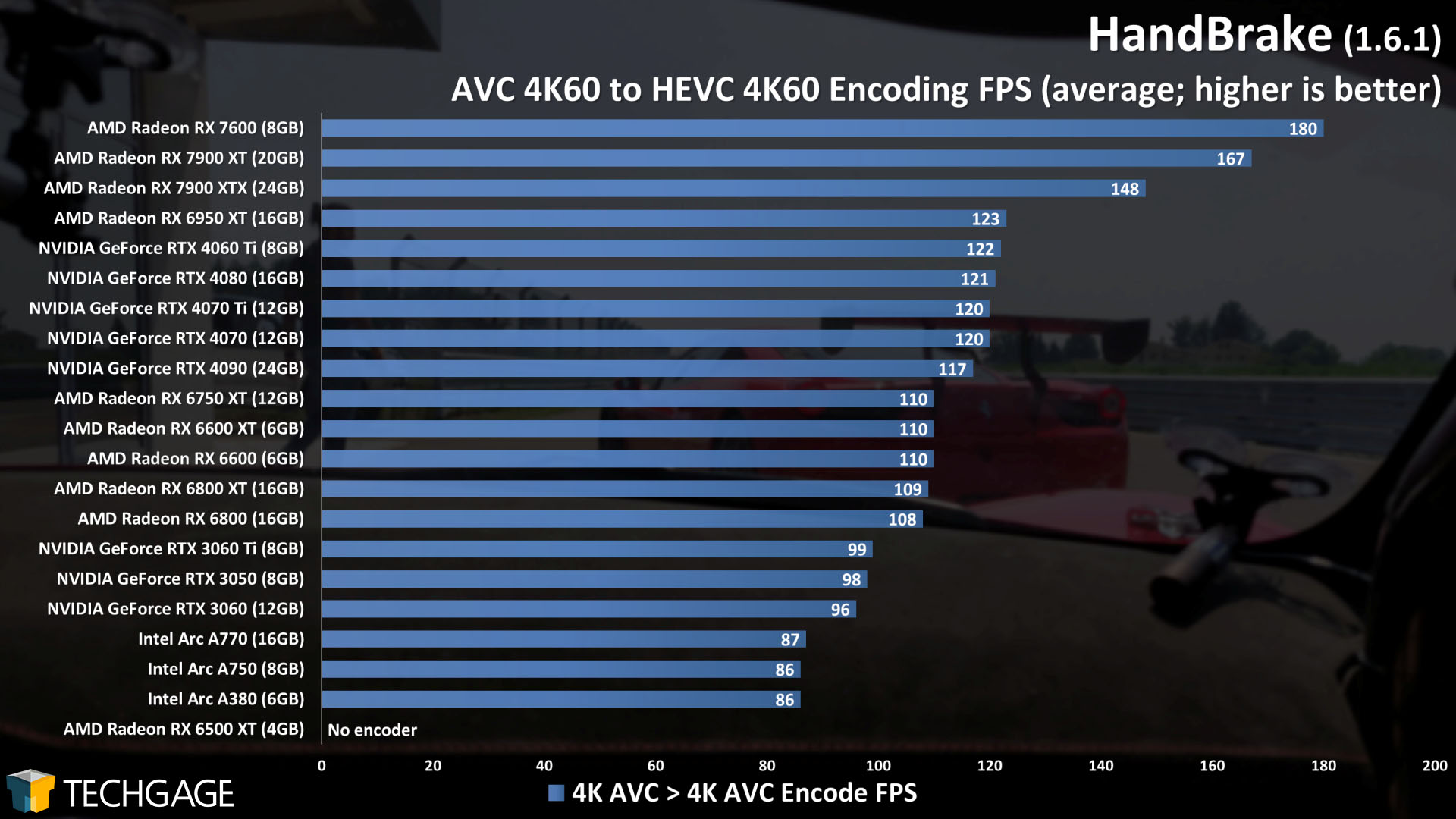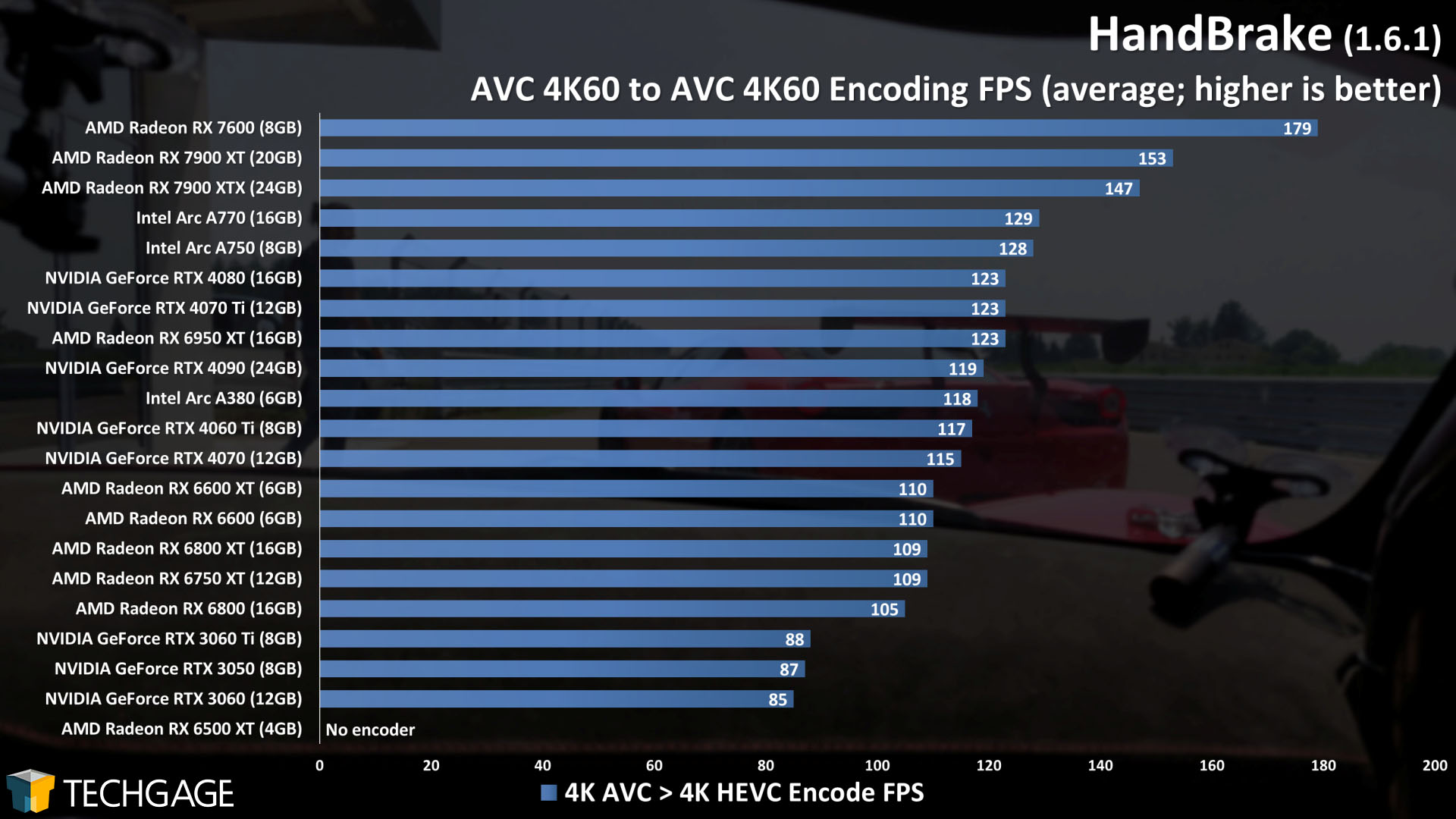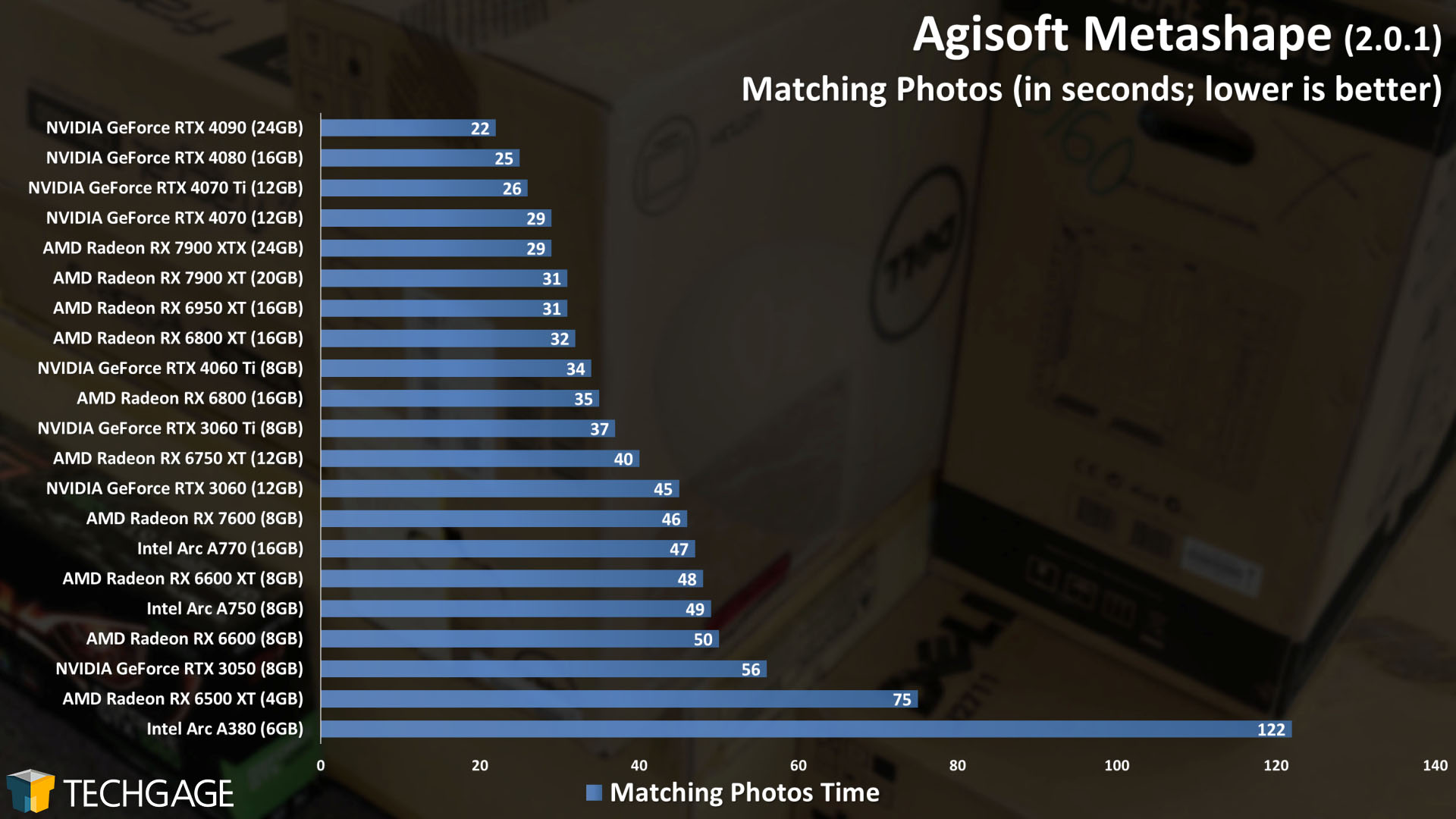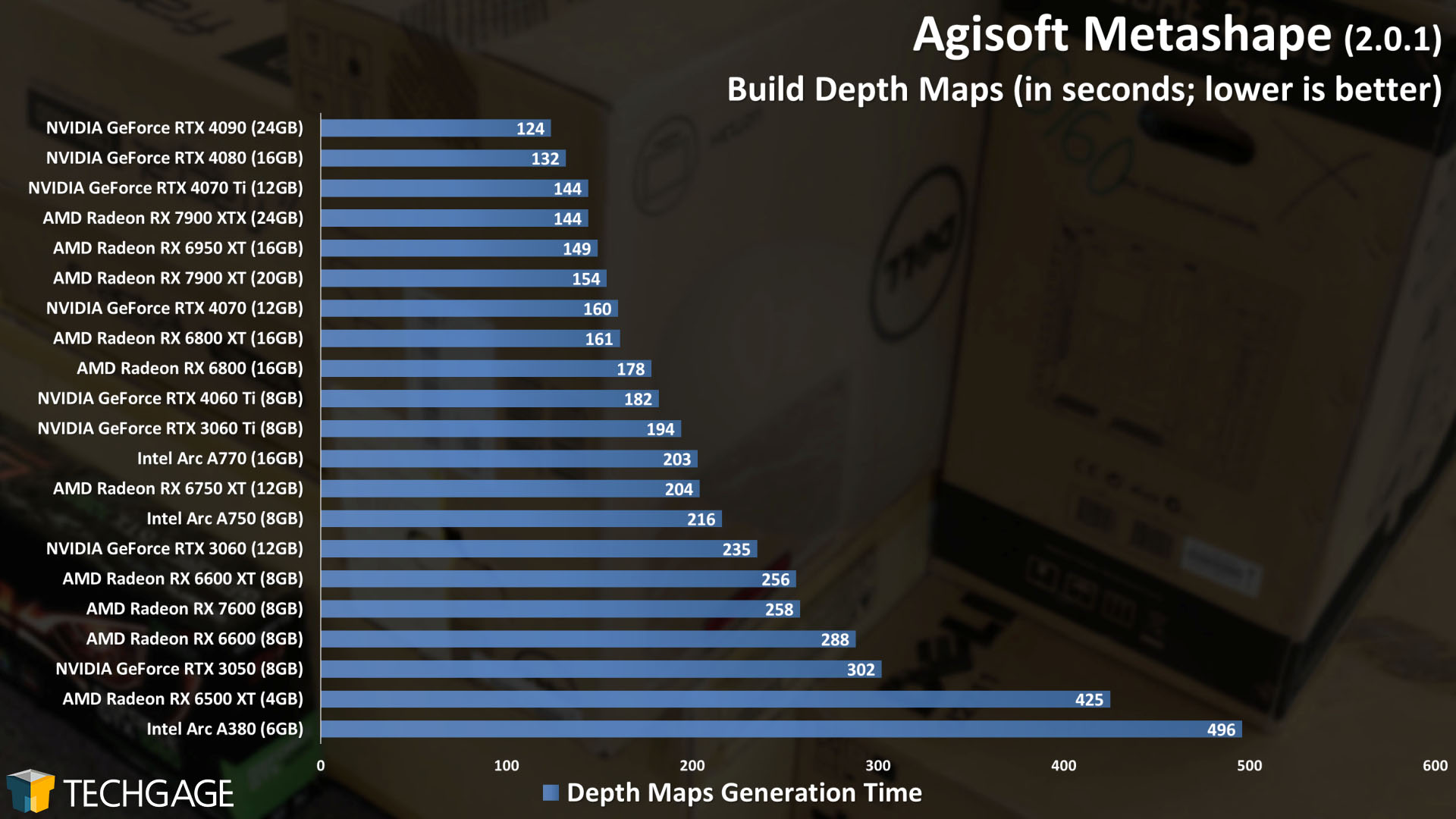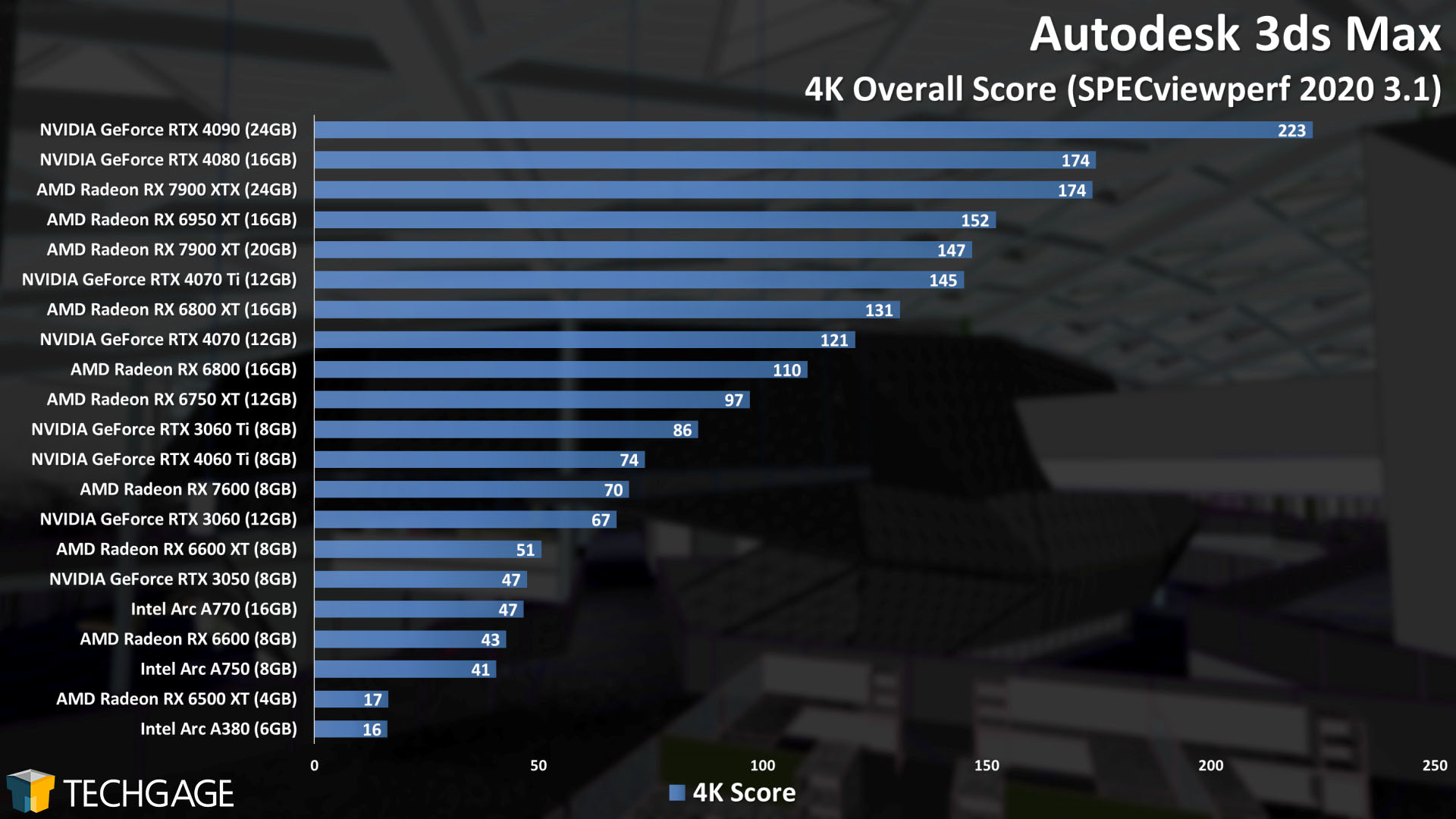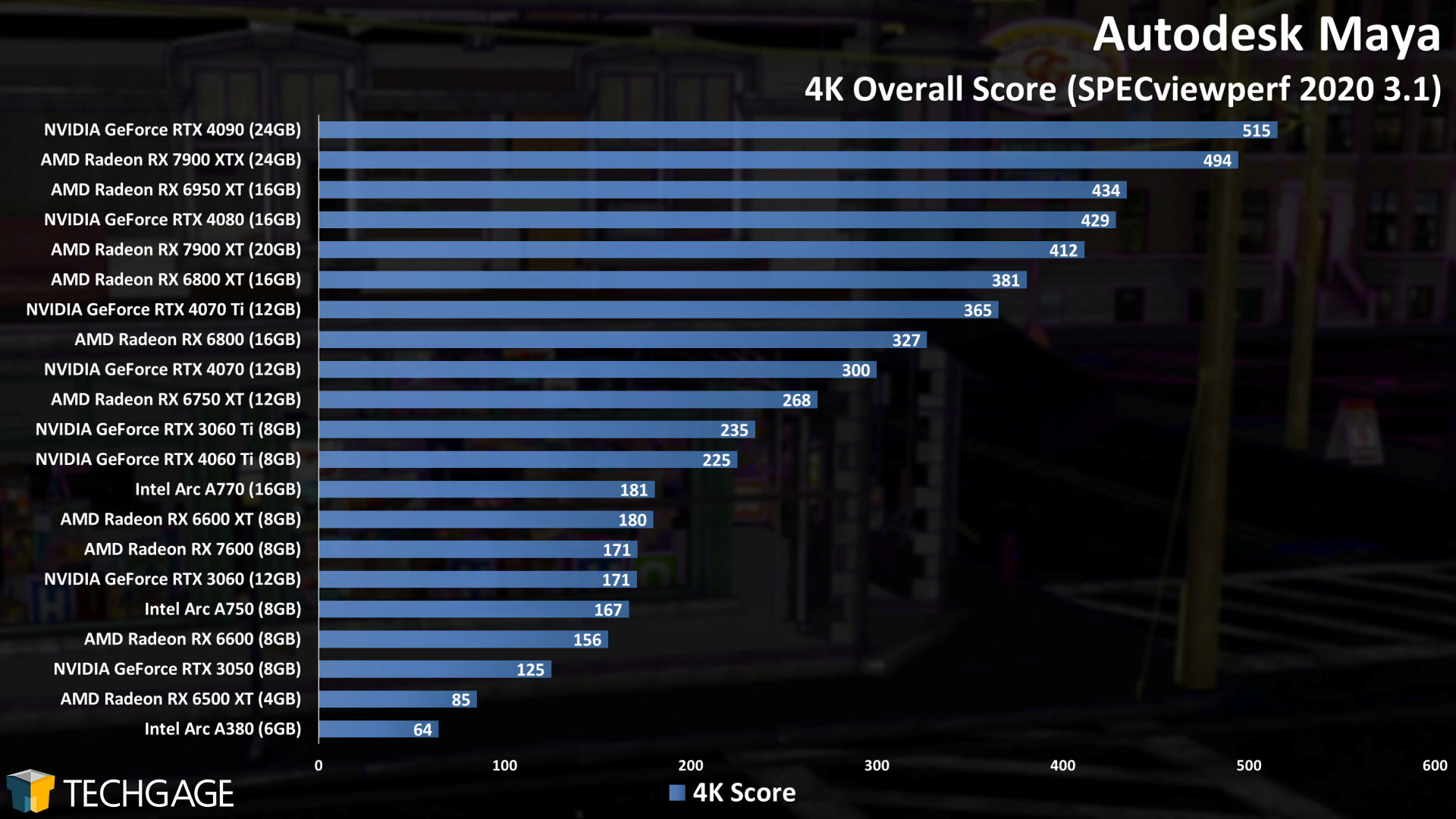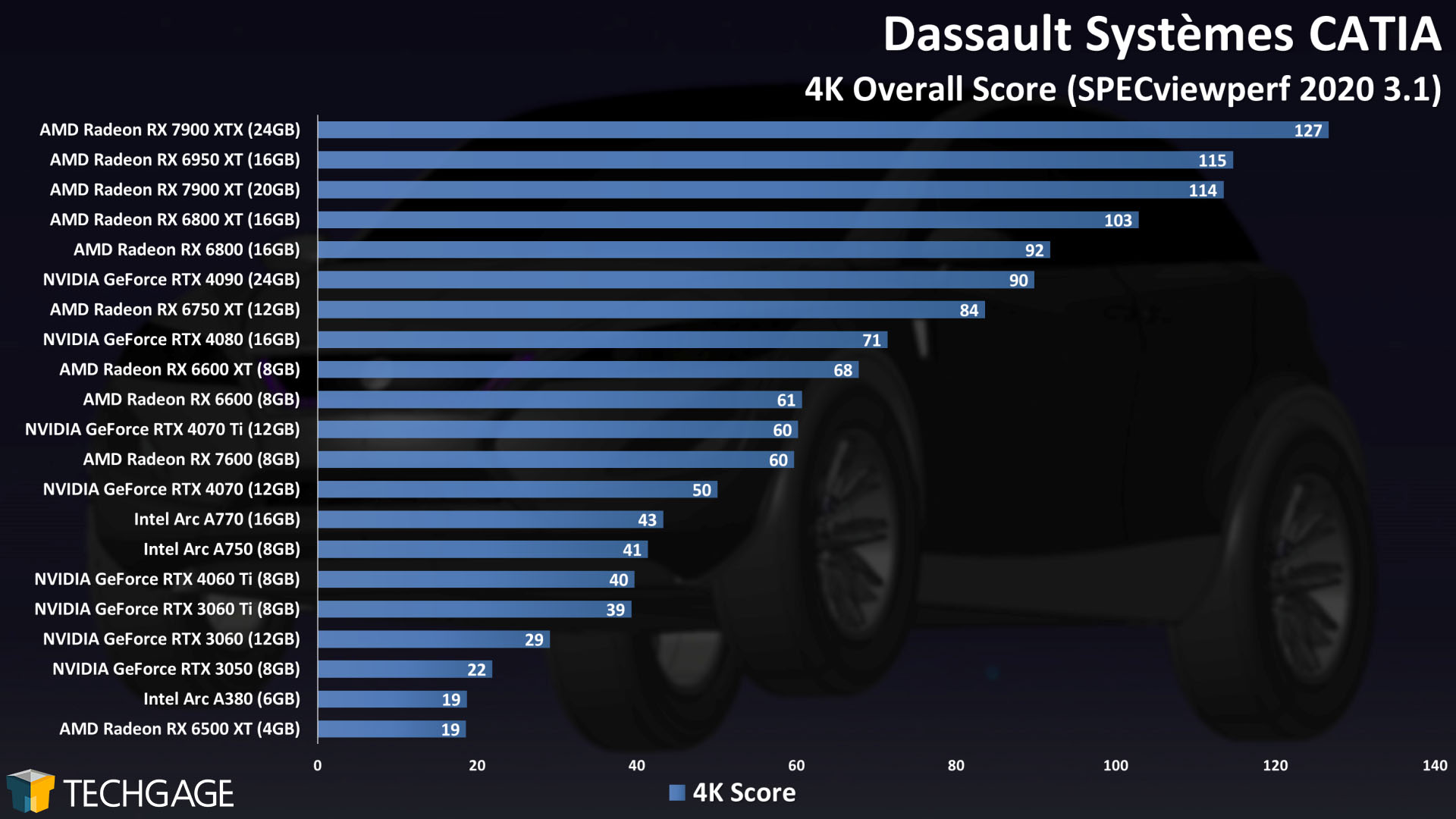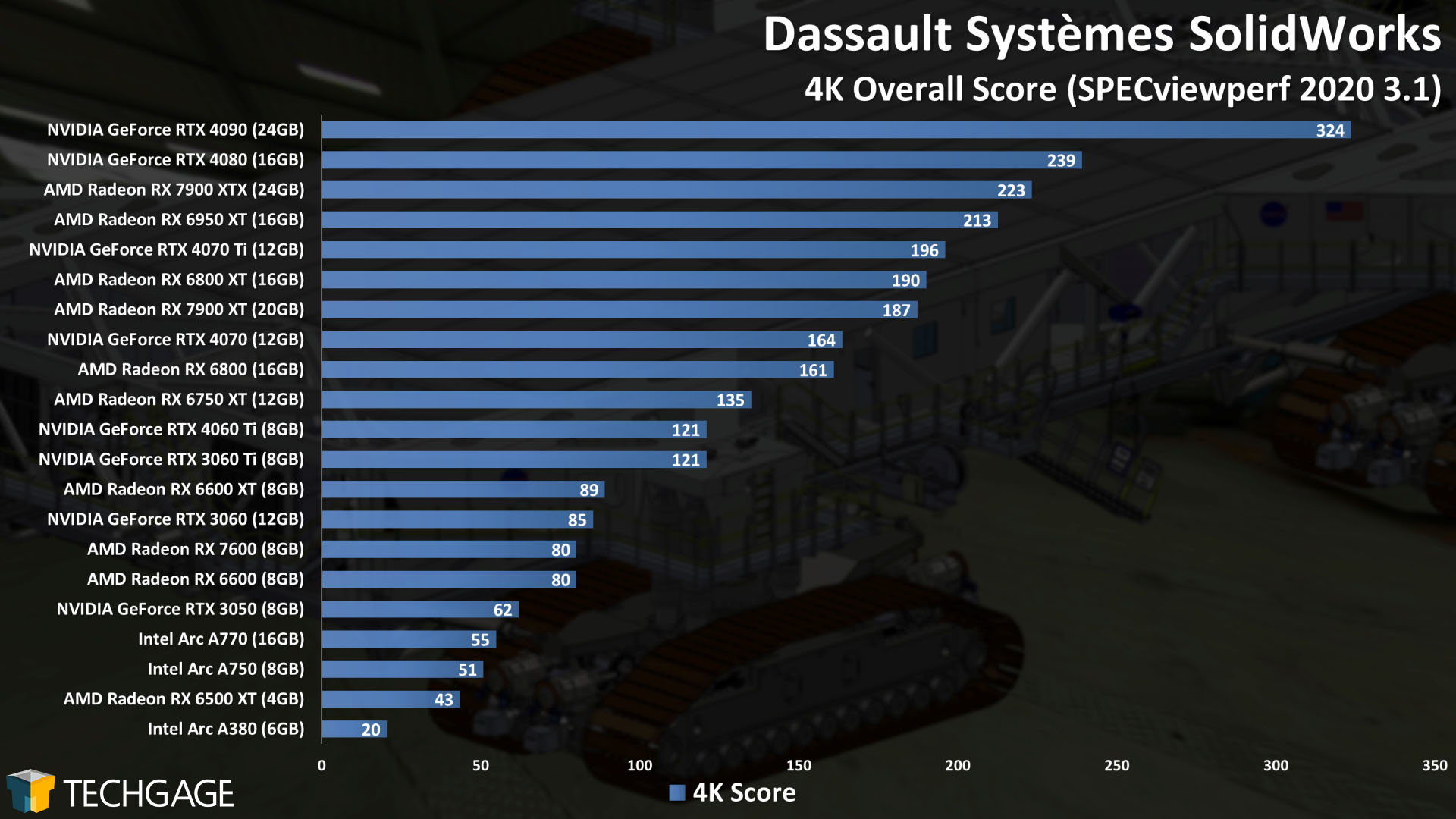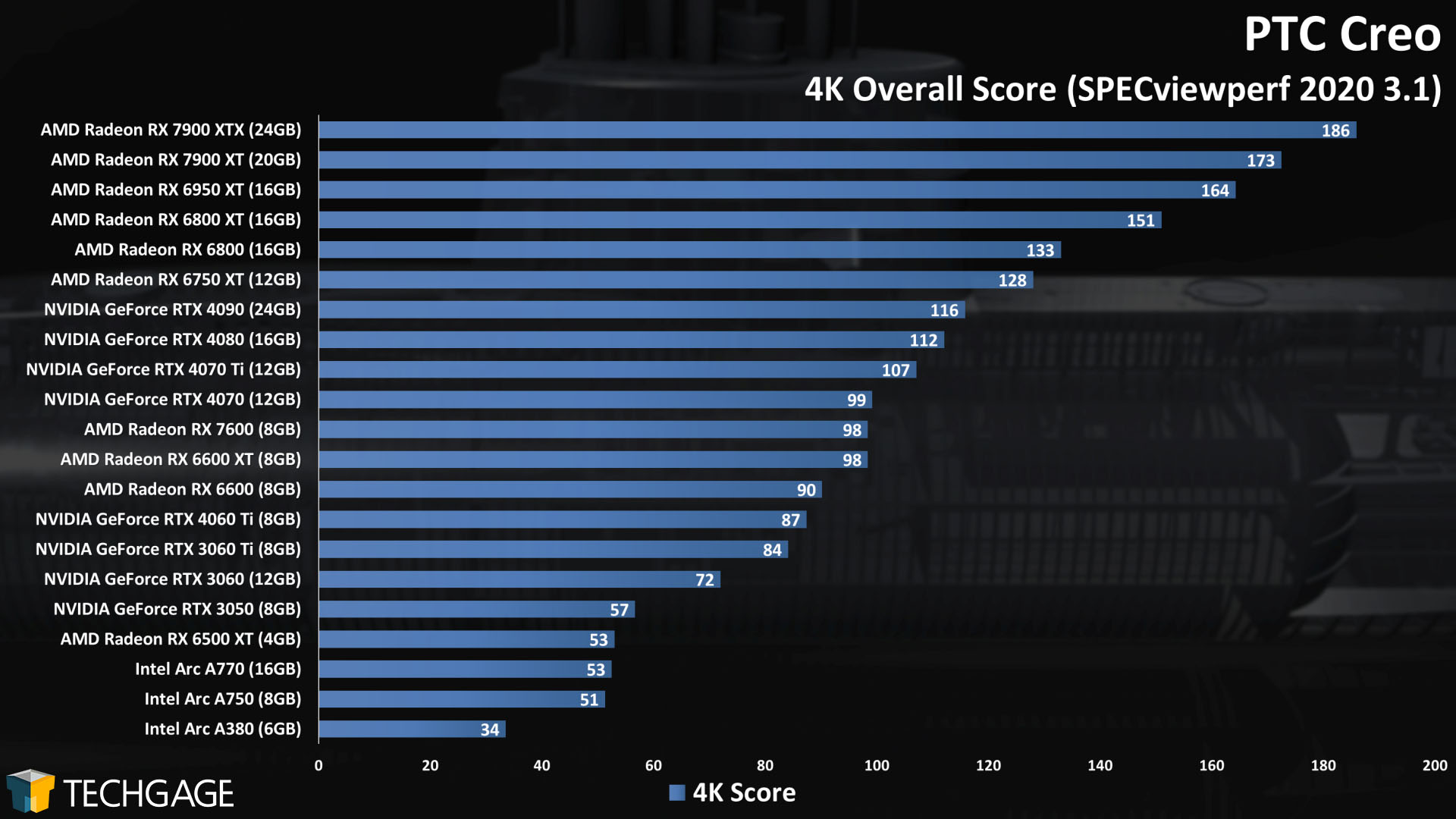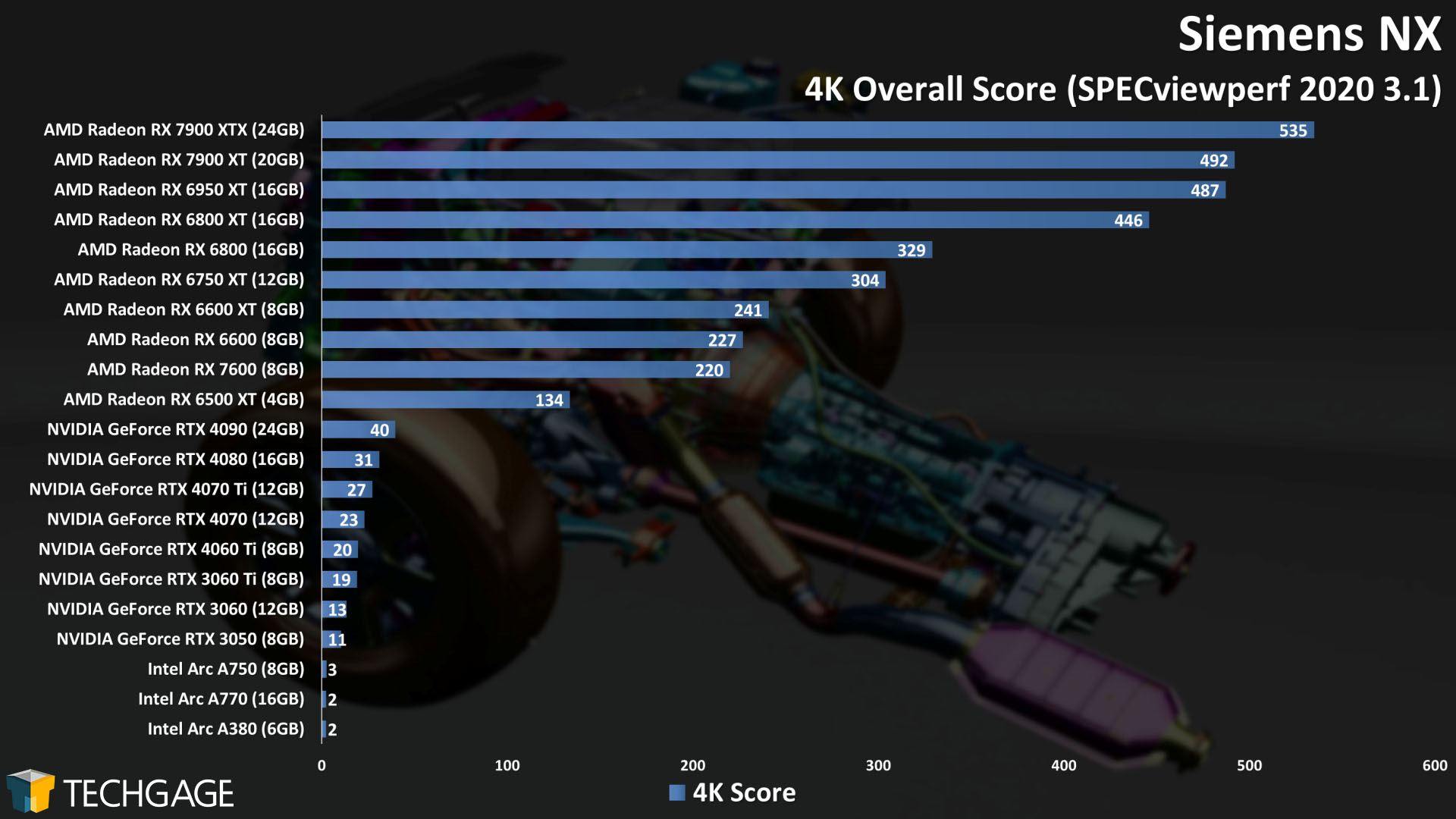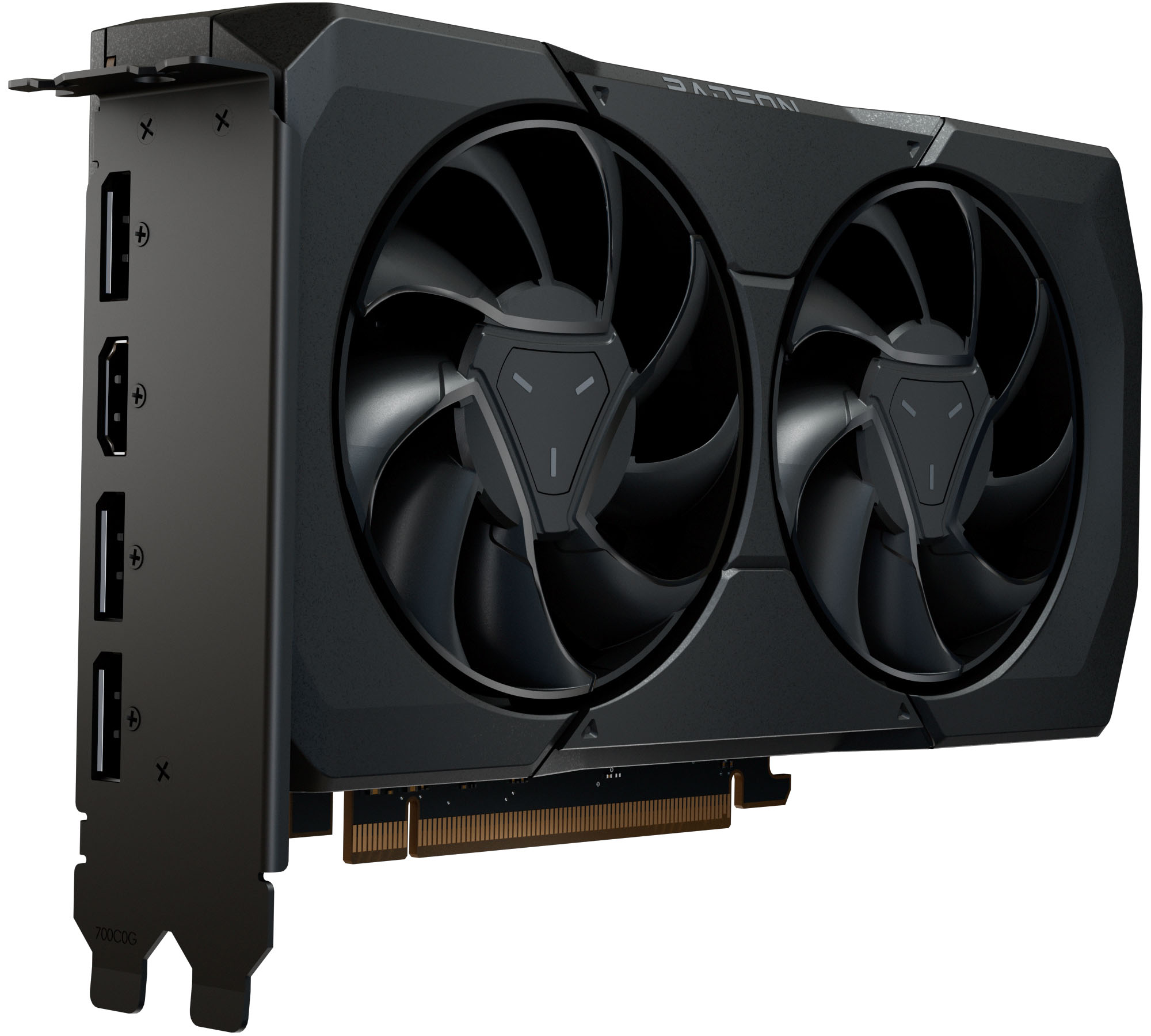- Qualcomm Launches Snapdragon 4 Gen 2 Mobile Platform
- AMD Launches Ryzen PRO 7000 Series Mobile & Desktop Platform
- Intel Launches Sleek Single-Slot Arc Pro A60 Workstation Graphics Card
- NVIDIA Announces Latest Ada Lovelace Additions: GeForce RTX 4060 Ti & RTX 4060
- Maxon Redshift With AMD Radeon GPU Rendering Support Now Available
AMD Radeon RX 7600 8GB Creator Review
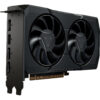
AMD’s third RDNA3-based Radeon has just launched in the form of the RX 7600, an 8GB offering priced at $269. AMD claims that this card targets “high” 1080p gaming, but for our first look, we’re going to delve into its performance across creator workloads, including encoding and rendering.
Page 2 – AMD Radeon RX 7600: Encoding, Viewport & Final Thoughts
As we did on the previous page, we’re going to let most of the results on this page speak for themselves, and comment on each set afterwards.
Adobe Premiere Pro
Blackmagic Design BRAW Speed Test
HandBrake
It’s not something that impacts everyone, but it’s clear as day that the video encoder found in RDNA3 is a lot better than its previous generation. All three RDNA3 GPUs that have been tested here group together outside of the Heavy Effects test, with particular strengths seen in HEVC encode.
The BRAW Speed Test decode results also show gains with the RDNA3 generation, but both Intel and NVIDIA seem to rule that roost. With HandBrake, it’s not just HEVC encode that sees strong performance from RDNA3, but also AVC.
Unfortunately, while HandBrake’s current version supports AV1 encode for Intel, it lacks it for the others. Premiere Pro doesn’t support AV1 at all, and neither does VEGAS Pro. And speaking of VEGAS Pro, we’ll be digging into testing that in the weeks ahead, and will dedicate an article to it, rather than just slip it into a monolithic review. Problems prevented us from including it in this article, which is too bad, since we’ve seen AMD perform great in it before.
Before moving on, it does stand out that the RX 7600 dominated the HandBrake charts, and we should emphasize that it’s a repeatable result. With creator testing, you never know how a piece of software is going to utilize hardware. Not all configurations are perfectly blended for every single workload.
Agisoft Metashape
In Metashape, we effectively see equal performance from the RX 7600 and RX 6600 XT. Intel’s performance is quite strong here, with the A750 sitting just behind the beefy RX 6750 XT.
Viewport Performance
After looking over all six sets of viewport results here, we see clear domination by the RX 6600 XT over the RX 7600. Based on last- and current-gen SRPs, that’d be expected, although the RX 7600 has managed to hold its own in most other tests. This draws a parallel to the RTX 4060 Ti review yesterday, which saw lackluster SPECviewperf gains vs. RTX 3060 Ti.
Final Thoughts
We’ve once again reached the moment where we have to draw up conclusions, and fortunately, AMD’s made that fairly easy for us here. When we were first briefed on the Radeon RX 7600, AMD had expected to launch it at $299. Ahead of the embargo lift, that was changed to $269. At first, we were a bit confused, since the only nearby competition is NVIDIA’s $299 GeForce RTX 4060, due in July. After looking over the data, though, it did seem to make sense.
We saw the RX 7600 either match or beat out the last-gen RX 6600 XT in many tests, with some exceptions that could be tethered to more driver optimization being needed. The RX 6600 XT launched at $379, but herein lies the problem: AMD’s biggest competitor at this price-point isn’t Intel or NVIDIA, but AMD itself.
Looking at places like Newegg, it’s not hard to find the RX 6600 or RX 6600 XT for a price much lower than SRP. Despite being so close in performance to the RX 7600, the RX 6600 XT can be found for as low as $255 right this moment. Prices like that might not be permanent, but they pop up often enough. Also on Newegg, the RX 6600 can be had for as low as $200.
With the RX 7600 edging out the RX 6600 XT more often than not, the $269 price-point seems fair. If performance doesn’t leap ahead much in a given workload, the RNDA3 generation still brings a number of useful features over RDNA2, like improved RT performance, what we’re expecting to be the best level of support for RT acceleration in rendering (like with what we’ll see in the forthcoming Blender 3.6), and AV1 encoding.
AV1 is a great feature to see (Intel and NVIDIA have it, too), but what stood out most to us with video encoding was just how strong RDNA3’s encoder is. All of the HEVC transcode tests (along with the standard YouTube video encode) performed best on the 7000-series Radeons.
All of this said, while we feel that the RX 7600 has an appropriate price tag slapped on it, that doesn’t mean that it’s the de facto right choice for your creator PC. All three graphics vendors optimize popular applications differently, so what you need to look at first is the most important performance aspects of your workflow, and ensure you’ll be getting top performance for those. As we’ve seen in the results above, while AMD’s RDNA3 is fantastic at encoding, it falls behind the others in rendering, so while AMD might beat a higher-end last-gen Radeon out, it might still not beat out the competition in a given workload.
Overall, like with the RTX 4060 Ti, the launch of the RX 7600 isn’t quite as exciting as we hoped, but that seems to be its biggest fault. If it suits your workflow, it’s a good contender, but it’s also a good idea to keep on top of last-gen prices, just in case you’re able to score a good deal on an even faster GPU. As we write this, we see an RX 6750 XT 12GB on Newegg for $330. That’d be a 25% performance boost (per LuxMark) for a 22% price premium, with the added bonus of an additional 4GB memory. A deal like that might not last long, but they pop up often enough that it’s worth keeping on top of etail sites when you’re on the lookout for a new GPU.
Support our efforts! With ad revenue at an all-time low for written websites, we're relying more than ever on reader support to help us continue putting so much effort into this type of content. You can support us by becoming a Patron, or by using our Amazon shopping affiliate links listed through our articles. Thanks for your support!




